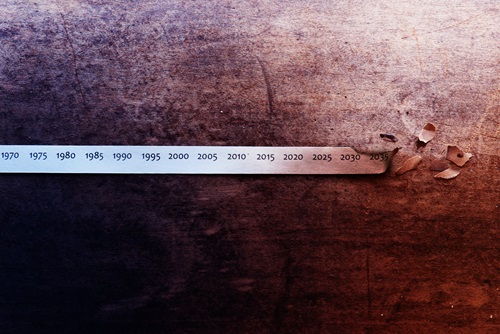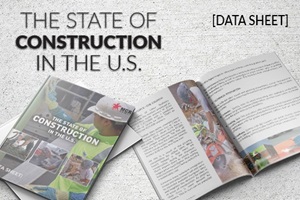Before the Occupational Health and Administration (OSHA) began operating, tracking workplace injury statistics was an afterthought. In 1970, when the OSHA ACT was founded, it is estimated that approximately 14,000 workers were killed on the job 1970. That's roughly 38 deaths a day. The good news is that the number has been decreasing yearly, and workplace injuries, illnesses, and fatalities are declining. And, more data on virtually every workplace activity and injury is available from the Bureau of Labor Statistics. Helpful data aids safety managers in

Workers are entitled to a safe workplace, and OSHA ensures it happens.
In our article The Top 25 Most Fatal and Dangerous Jobs in America, there were 5,190 worker fatalities. Compared to 1970, that's 62% fewer fatalities, a testament to OSHA standards established that keep workers sample from workplace hazards. Some might argue that the number has decreased due to fewer manufacturing jobs in the U.S. as America has shifted to a more service-based economy. However, when you examine the construction industry, one of the most dangerous environments workers operate in, the fatality rate has fallen from 25 to 11 for every 100,000. OSHA standards have worked, and companies like MCR Safety help continue lowering that number with personal protective equipment (PPE). This article will examine OSHA's purpose, mission, and history and provide an overview of America's most trusted agency for protecting workers.
OSHA Definition

For specific OSHA definitions, visit the OSHA definition page. Essentially, OSHA is the administration created from the Occupational Safety and Health Act of 1970, signed into law by President Richard Nixon. The agency falls under the United States Department of Labor, is a part of the Executive Government Branch, and is best known for reducing workplace hazards and dangers that workers face daily.

Agency inspectors can examine almost any workplace facility operating within the private industry and some public operations. They will review training documentation and injury reports and investigate overall workplace site operations. If a company doesn't follow standards and requirements to mitigate workplace hazards, OSHA may levy a monetary fine and enforce laws against those who put workers at risk.
Purpose and Mission

OSHA's mission is to ensure the safety and health of America's workers by setting and enforcing standards, providing training, and educating workers on workplace hazards to ensure continual improvement in workplace safety and health. The agency has established common sense standards that have saved thousands of lives and prevented countless injuries and illnesses.

Many workplaces produce severe hazards that are dangerous to workers unless specific regulations exist, which is why regulations ensure safe working conditions.
Helpful Resources:
History of OSHA

We decided to reflect on OSHA's journey over the past 40- 50 years. MCR Safety's journey began more than 40 years ago, and it parallels the history of OSHA. Over that time frame, OSHA has advanced safety across the country that genuinely makes a difference in the workplace and among workers.Here's a quick snapshot of the critical moments in OSHA history.
- 1968 - President Lyndon Johnson's Labor Department proposed legislation to develop a federal regulatory program for workplace safety.
- 1970 - In December, President Richard Nixon signed the Occupational Safety and Health Act.
- 1971 - Five months later, the first standards became active for safety and health protection.
- 1972 - In May, OSHA created the OSHA Training Institute to train inspectors and inform the public. In June, the first standard addressed asbestos and focused on protecting workers from lung cancer, asbestos, and mesothelioma. In November, additional regulations focused on construction safety standards.
- 1974 - The vinyl chloride standard was issued to address the dangers of liver cancer due to worker exposure and 14 other cancer-causing substances.
- 1977 - The Standards Deletion Project simplified and deleted more than 1,000 safety standards. They changed more than 900 standards as a result.
- 1978 - The cotton dust standard was issued, protecting textile workers from "brown lung." In addition, a lead standard is issued.
- 1980 - OSHA coverage extended to federal workers.
- 1982 - The Voluntary Protection Program recognizes workplaces with exemplary health and safety management systems.
- 1986 - Ground-fault circuit interrupter standard is issued to protect construction workers.
- 1987 - The benzene standard was issued, a toxic chemical that causes leukemia.
- 1989 - Excavation and trenching operations standard required shoring and escape ladders on construction projects.
- 1994 -OSHA strengthened rules requiring protection for construction workers, including safety harnesses and guardrails.
- 1996 - Construction scaffold safety standard was issued.
- 2001 - Steel erection standard was issued to protect construction workers.
- 2004 - The OSHA National Emergency Plan was issued, establishing agency policies during national emergencies.
- 2007 - OSHA confirms that employers must pay for required personal protective equipment (PPE) such as protective gloves and earplugs.
- 2010 - Cranes and derricks standard issued, replacing a 40-year-old rule.
- 2012 - Revises Hazard Communication Standard to protect workers from dangerous chemicals and align standards with the United Nations' Globally Harmonized System of Classification and Labeling of Chemicals.
- 2014 - Revised the 40-year-old construction standard for electric power generation, transmission, and distribution.
- 2016 - Updates its rule on general industry walking-working surfaces standards for using personal fall protection systems.
So many of these things we've come to accept as everyday practice. We need to look back to realize how many formal regulations are in place to protect workers. Plus, it's a growing list of protections and not without revision when necessary to either improve protections or streamline rules.
History of OSHA Video

If you're better at videos than blog posts, the UFCW has posted some videos that interest you. The first video recognized the 40th Anniversary of OSHA in 2011. The second one, called "Can't Take No More," was issued by OSHA in 1980 with narration by Studs Terkel. It chronicles the development of workplace safety. You'll find both on the United Food and Commercial Workers Safety and Health website.
Another spectacular video on The Story of OSHA tells how the agency turned the tide of workplace injuries.
Training

OSHA standards have prevented countless workplace injuries and death over the past five decades. However, it has only been due to training initiatives. Most times, the newest employee on a job site is the most vulnerable due to having limited knowledge of workplace hazards, which is why training becomes a critical component of safety programs. When workers understand how to do their work safely, injuries begin to drop as workers can better identify hazards.
As mentioned above, training is an essential component of what the agency provides. Two training programs safety managers utilize to aid workers are OSHA 10 and OSHA 30.
Click on the images below to be taken directly to the articles on each training subject.
Common Questions

When was OSHA created?
- It was created and signed into law on December 29,1970.
What does OSHA stand for?
- The acronym stands for the Occupational Safety and Health Administration.
What does OSHA do?
- OSHA can issue new or revised occupational safety and health standards to ensure workplace safety. They also administer the recordkeeping system established from the Act of 1970.
What protections does OSHA give to people in the United States?
- The Occupational Safety and Health Act of 1970 provides everyone in the U.S. the right to a safe workplace and free of hazards.
How can you file a report with OSHA?
- For companies, the following website provides the functionality to report a fatality or severe injury. For individuals, the following file-a-complaint website will allow someone to report if there is a severe hazard that a company isn't currently addressing.
What do OSHA and the SEC have in common?
- Both agencies can create and enforce regulations.
Regulations

All of the OHSA regulations exist to protect workers from hazards in the workplace. Our specialty is Personal Protective Equipment (PPE). OHSA Regulation 1910.132 covers protective equipment for eyes, face, head, and extremities, including protective clothing, respiratory devices, and protective shields and barriers. That protection must address exposure to mechanical, chemical, environmental, and radiological hazards or irritants. Also, regulation 1910.132(h)(1) specifies that, with few exceptions, the employer must provide the required PPE at no cost to their employees.
Check out our article PPE: Definition, Meaning, Gear, and Equipment to gain an in-depth understanding of the critical role it plays across numerous industries.
We've Got You Covered.

What's more important, one's money or one's health? Without health, one has little chance of spending that money in peace, so if you're smart, you'll answer health. With OSHA in place, it's the law that workplaces address workplace hazards and provides workers the right to keep their health after an honest's days work. With regards to PPE, MCR Safety has you covered in complying with OSHA regulations by providing numerious protective product categories. Just like OSHA, we have over 40 years of experience protecting workers and are here to aid in any PPE hazard assesment needed to ensure worksites are safe. MCR Safety, We Protect People!
Click the below image to leave us comments, questions, or any concerns.
For over 45 years, MCR Safety has proven to be a world leader in gloves, glasses, and garments. Whether it's erecting a scaffold, carrying heavy materials, or working at a construction site, we are there providing solutions to workplace hazards. It's all part of our commitment to protect people.
No matter your industry, we have the personal protective equipment you need.
Click the above image to be taken directly to our PPE online catalog.

Learn more about MCR Safety by checking out our most recent video. For more information, browse our website, request a catalog, find a distributor, or give us a call at 800-955-6887.

State of Construction in the U.S.
About the Author
Related Articles

A Basic Overview of OSHA Standards for Construction
The Occupational Safety and Health Administration's (OSHA's) report for fiscal year 2015 recorded....png?h=105&iar=0&mh=200&mw=200&w=200&hash=733242AF35228C7DA9C46F5D4E921688)
The Top 25 Most Fatal and Dangerous Jobs in America
This article will provide a comprehensive understanding of the top 25 most unsafe occupations,....png?h=105&iar=0&mh=200&mw=200&w=200&hash=863E051DFF626F95FBFF19F2676F5B74)
The Top 25 Supplies Every First Aid Kit Should Have
Well-stocked first aid kits are literally life savers when a medical crisis takes place, and...
Safety Precautions for Emergencies at Home and Work
Mother Nature is a powerful force, and the world can be a dangerous place to live. Venomous....png?h=105&iar=0&mh=200&mw=200&w=200&hash=59363A85C04F94BEA16ED617B7D8B060)
Offering Insight into OSHA 30
OSHA began offering safety and health trainings in the 1980s through its OSHA Education Centers,....png?h=105&iar=0&mh=200&mw=200&w=200&hash=F081912049304FBD2BED4C299298FF9D)
Learn About Lockout Tagout
This article provides an explanation of lockout/tagout, highlights its overall importance, and...Latest Articles









